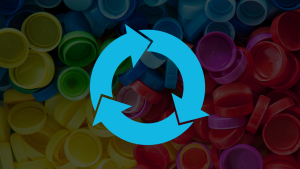Gillette plans to shave use of virgin plastics by 50% by 2030
Personal care products brand Gillette, known for its razors, set out to become a more sustainable company one decade again. And over the past 10 years, it has reduced its energy consumption by 392,851 gigajoules and its greenhouse gas emissions by 26 percent. The company has also reached zero-manufacturing-waste-to-landfill status across all of the plants in its global network.
On Monday, Gillette announced its 2030 goals to uplevel its sustainability ambitions. Building on the 26 percent reduction in greenhouse gas emissions — and using a 2009-2010 baseline — Gillette plans to boost that number to a 50 percent reduction by 2030.
“We’ve done a lot over the 10 years. But we’re not complacent,” said Gary Coombe, CEO at Gillette. “And we recognize there’s still a lot to do.”
One of Gillette’s 2030 goals is to maintain zero-waste-to-landfill status. To achieve that designation at its World Shaving Headquarters in Boston, Gillette worked with local recycler Rand Whitney Recycling to do an in-depth assessment on all of its waste streams, with a goal of ensuring all would be either reused, recycled or incinerated for energy recovery. P&G Corporate, Gillette’s parent company, doesn’t release numbers about how much waste is reused, recycled or incinerated across its brands.
From there, the company worked to reduce scrap waste and engaged employees to help improve recycling rates. Gillette said because the assessment of its waste streams, which helped determine how to treat the waste, was effective, it was later implemented at other plants globally.
Another one of Gillette’s goals is to reduce water consumption related to production by 35 percent. The company has been cutting its water consumption by using more recycled water at its sites and through water conservation projects. The company shared its Milenio plant in Mexico as an example. At that plant, it said it has zero water discharge, meaning 100 percent of its wastewater is treated and reused onsite.
What’s more, Coombe said when Gillette thinks about reducing water consumption, it also considers how to reduce the amount of water people who use its razors consume when shaving.
To that end, it designed razors to be easier to rinse hair from, enabling people to use less water. It also recently released a “waterless” razor for “assisted shaving,” or shaving someone else. that product was designed with caregivers in mind, with a shave gel tube attached directly to the razor.
Gillette’s other 2030 goals include:
- Use 100 percent renewable purchased electricity: The company has created an energy task force team at each of its sites to help identify and improve its energy footprint.
- Reduce absolute virgin plastic by 50 percent.
- Provide 100 percent transparency about the ingredients in its formulas: Gillette is part of the Smart Label program in the U.S. to promote ingredient transparency for people who use its products. Additionally, its parent company P&G provides product ingredient information through its product ingredient transparency page.
- Responsibly source animal, plant and mineral-derived materials, backed by supporting credentials (e.g. Forest Stewardship Council)
- Use 100 percent recyclable packaging.
- Increase the amount of PCR content used in its blades and razors by 2023.
To help support the recyclability of its products, in 2019, Gillette in partnership with TerraCycle, launched a razor recycling program in the U.S., Canada, UK, Australia and New Zealand, which allowed its customers to recycle any brand of used razor handle or blade along with its packaging.
“This is a program that we felt was very important and, you know, necessary to give consumers that option, should they wish, to recycle the product,” Coombe said. “That’s a partnership that continues to grow. And we’re going to leverage it further, as we launch new products and products that are even more specifically designed to improve the environmental profile of the razor.”



